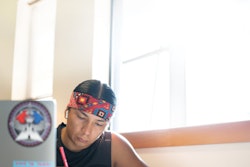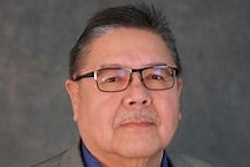About 300 distinct Indigenous languages flourished among Native American nations before European colonizers set foot in what would become the U.S. Today, only about a third of those languages exist. Of those, about 90% are at risk of becoming extinct by 2050, according to the National Congress of American Indians.
For that reason, Indigenous language scholars have long felt the weight of time on their shoulders as they race to save their languages. But when the COVID-19 pandemic hit, that weight felt even heavier.
With the virus being particularly harmful to people older than 65 and with elders being the majority of fluent speakers, language preservation work — at least, work that’s traditionally been done face-to-face — was largely put on hold.
“There’s a saying that every time one of our elders passes away, a library burns down,” says Caroline Running Wolf, a Ph.D. student at the University of British Columbia who is researching Indigenous languages and artificial intelligence (AI). “Nobody wants to be that spark that sets the library on fire, so you’re in that difficult situation where the clock was ticking before, but now it’s ticking even faster.”
Just like thousands of other classes across the country, Indigenous language teachers adapted by moving online to Zoom once the pandemic took hold. And while it is not the same as face-to-face or immersion learning, Zoom does have one fortuitous benefit: accessibility.
A study conducted this past summer by Dr. Onowa McIvor, an associate professor of Indigenous education at the University of Victoria, observed that the shift to virtual learning noticeably improved accessibility for students previously unable to participate in Indigenous languages classes due to their geographic location.
“Almost exclusively, language offerings were face-to-face prior to COVID, and that’s because of the nature of what we do — it’s so territorial-based, relationship-based …,” McIvor told Canada’s CBC Radio in an interview on Sept. 23. “But then we have this huge shift online, and the benefit of that is that we’re seeing this huge uptake in people’s ability to access the language, especially if they’re living out of territory or anywhere around the world, so there is a swing towards much larger engagement and accessibility.”















